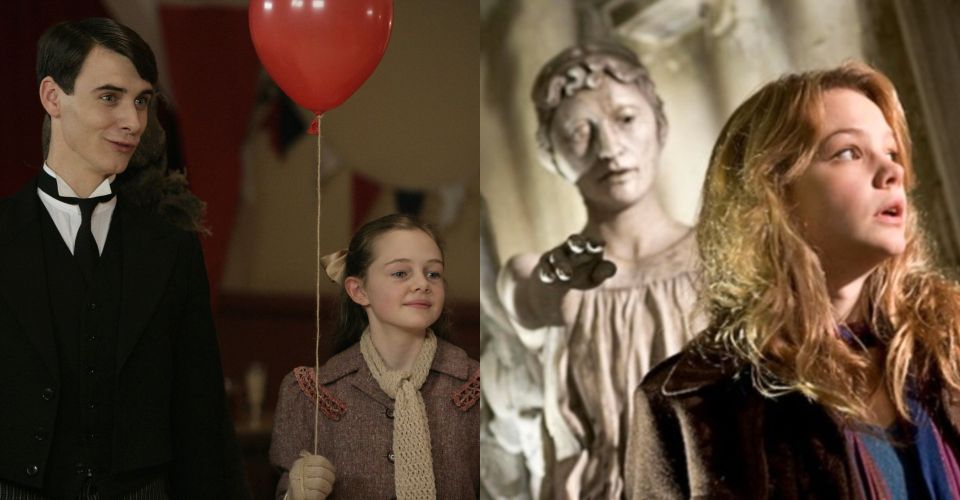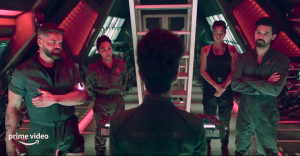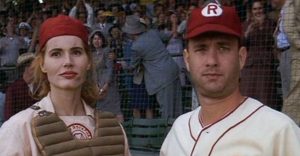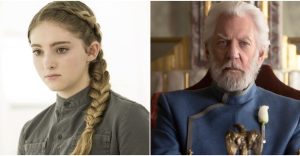Doctor Who: 10 Best Stories From The Russell T. Davies Era, Ranked

The secret to Doctor Who‘s long-running success is its ability to change, adapt and regenerate. Thirteen actors have led the show over its almost sixty-year run and many different producers/writers have been at its helm.
When Doctor Who returned in 2005, it was Russell T Davies at the controls of the iconic TARDIS. Many memorable characters and monsters were introduced in Davies’ original era and many of the stories produced during this time have gone on to become fan-favorites, which is what makes the show runner’s upcoming return so exciting.
Turn Left (Season 4)

For the first time in New Who, the focus is almost entirely put on the companion in season 4’s “Turn Left.” This story explores the devastation of a possible world where Donna never met The Doctor and he is dead.
During the episode, Catherine Tate delivers a powerhouse performance that proves she’s far more than just a comedic actor; Donna goes through a multitude of different emotions here. The callbacks to other stories and mentions of past characters provide an exciting setup for the finale that follows too. Also, after teasing it earlier in the season, Rose Tyler finally returns to the forefront in this story (which is an exciting treat for long-time fans).
The Stolen Earth/Journey’s End (Season 4)

While the season 4 finale wasn’t quite the end of Davies’ era, it provides a perfect close to this chapter of the show. Having the Daleks and their creator, Davros, moving the Earth certainly brings high stakes but it is the return of many past characters that allows this episode to truly shine.
Not only do several of The Doctor’s past companions show up in the story but it also serves as a crossover with spinoffs, Torchwood and The Sarah Jane Adventures. While the second episode does contain some questionable plot conveniences, it is undeniable that this story is huge. Having so many of the show’s characters come together against the Daleks is a tantalizing payoff to four seasons of world-building.
Utopia (Season 3)

When Jack returns in season 3, The TARDIS travels to the end of the universe to try and shake him off. The newly formed trio of The Tenth Doctor, Jack, and Martha encounter the terrifying Futurekind and the mysterious Professor Yana.
The episode is most memorable for featuring one of the best plot twists in Doctor Who when Professor Yana reveals a fob watch which, once opened, reverts him to his former self: The Master. This twist, along with the return of Jack, makes this an unmissable episode of the show. Although the eventual resolution in the following two episodes is not quite as satisfying, this installment in particular is a non-stop thrill ride.
Silence In The Library/Forest Of The Dead (Season 4)

This season 4 story is memorable for introducing the future recurring companion, River Song. Uniquely, this is actually a great story to watch out of order as many of River’s future adventures with The Doctor (as seen later in the show) are mentioned during these episodes.
The setting of the library is both beautiful and atmospheric and the flesh-eating shadows are a terrifying threat. The episodes also give both David Tennant and Catherine Tate another chance to shine, both in their scenes together and when they are forcefully separated. Even when the audience are clueless about River’s identity, her death at the end of the story is still surprisingly heartbreaking.
The Girl In The Fireplace (Season 2)

In the show’s original run, romance was never a prominent theme but this season 2 story is perhaps one of the most romantic. Many of the themes and ideas introduced in the episode foreshadow writer Steven Moffat’s future work on the show and his love for ‘timey-wimey’ stories.
The idea of The Doctor meeting someone throughout their life within one episode is an intriguing and complex one. The scene when The Doctor returns for Reinette only to discover she has passed away is devastating and reinforces the loneliness of the titular character. The Clockwork robots are also a chilling and typical Moffat creation.
Bad Wolf/The Parting Of The Ways (Season 1)

While the stakes are undeniably high in The Ninth Doctor’s regeneration story, it is much more restrained and less bombastic than others in New Who. What begins as a tongue-in-cheek satire of British reality television, the episode soon descends into an all-out war with one of Doctor Who‘s best monsters, The Daleks.
During the story, Rose is given the opportunity to truly prove herself as a companion when she absorbs the time vortex in order to save The Doctor. The episodes also introduce Jack’s immortality (which becomes a huge plot point later on in the show and is pivotal to spin-off, Torchwood). Nine’s eventual regeneration is tragic yet heroic and Rose’s bewilderment is a perfect reflection of the audience’s feelings in the scene.
The Waters Of Mars (2009 Specials)

Right from the get-go, “The Waters of Mars” is a unique episode. Not only is The Doctor companion-less but the audience is quickly told that everyone on Bowie Base One is about to die. The death of side characters is nothing new for the show but being told this in advance sets the stage for the momentous decision The Doctor will make in the story.
The show had explored the idea of fixed points in time before, such as in “The Fires of Pompeii” when Donna begs The Doctor to save someone but never quite as much as in this special. The horrifying water-based zombie-esque virus that is plaguing the base is terrifying but the true horror of the episode comes when The Doctor takes it upon himself to save some of the crew. A much darker side to the title character is seen here and his decision has tragic consequences.
Midnight (Season 4)

What makes Midnight one of the scariest episodes from Doctor Who is the fact fans never see the alien threat that targets the space shuttle. As Donna doesn’t join him on this adventure, The Doctor is alone and far more vulnerable than ever before.
The idea of an unseen alien terrorizing the characters may seem creepy enough but it is the lengths the humans are prepared to go to in the story that gives it a truly chilling edge. The audience is used to seeing The Doctor take control and gain the trust of complete strangers; however, without a companion, The Doctor’s tendency to take charge actually works against him and causes suspicion. The episode is simple in nature but it does border on psychological horror.
Human Nature/The Family Of Blood (Season 3)

This two-parter has one of the more unique premises for a Doctor Who story. In order to hide from creatures known as The Family of Blood, The Doctor becomes human (with his human-self only recalling his past life as a Time Lord through dreams). Although The Doctor is technically not present for most of the story, it still provides a strong character study for the Time Lord.
As John Smith, he falls in love. In a clever twist, when The Doctor finally returns, it is revealed that he hasn’t been hiding from The Family because he fears them but because he fears what he will do to them if they catch up with him. Despite being one-time villains, the performances of the actors portraying The Family are sinister and memorable and the story is cleverly plotted from start to finish (solidifying it as one of the best two-part stories from Doctor Who).
Blink (Season 3)

After season 2’s divisive Doctor-lite episode “Love and Monsters,” it was a risk for the show to try this again the following year. The Doctor’s absence from an episode could prove a hindrance but it actually elevates “Blink” as the audience see what happens in situations when he can’t be there to help.
Sally Sparrow is a captivating one-off lead who ensures the audience remains invested in the episode even without the titular character. The episode is also responsible for introducing the now-iconic Weeping Angels who are one of the most threatening and effective villains from the show and continue to appear even to this day. The idea of The Angels only being able to move when they are not observed is a masterstroke and the episode is the perfect showcase for how the show you can still create new and innovative concepts even after decades.
About The Author

















